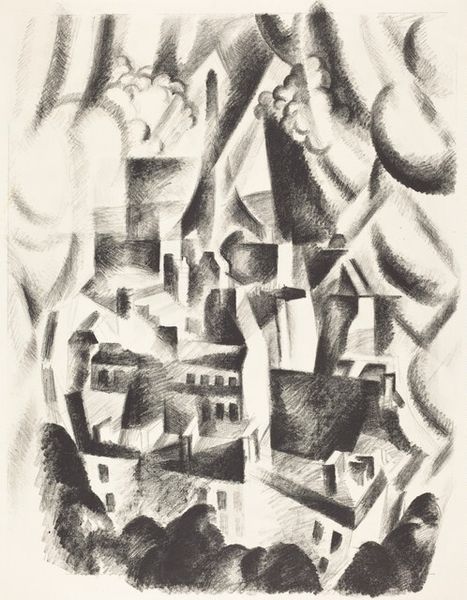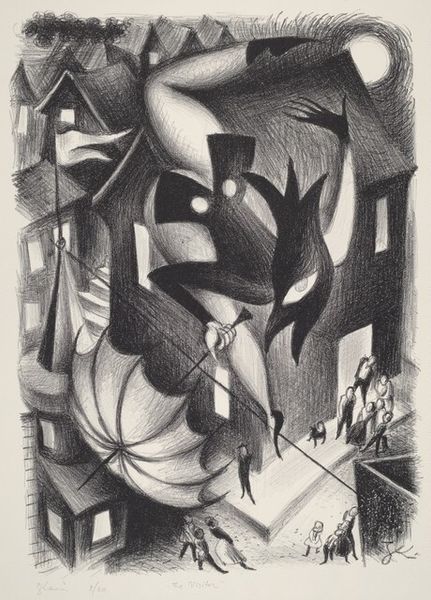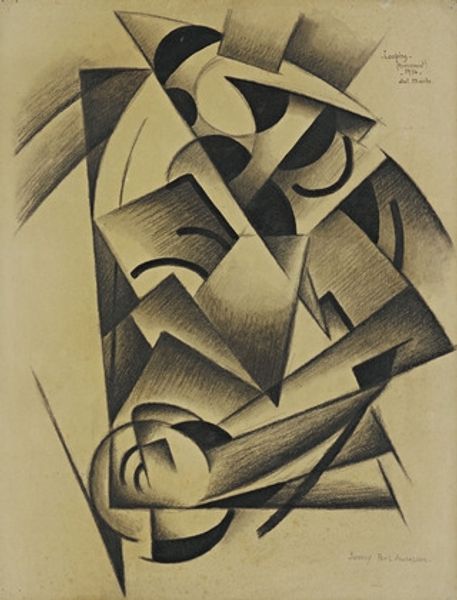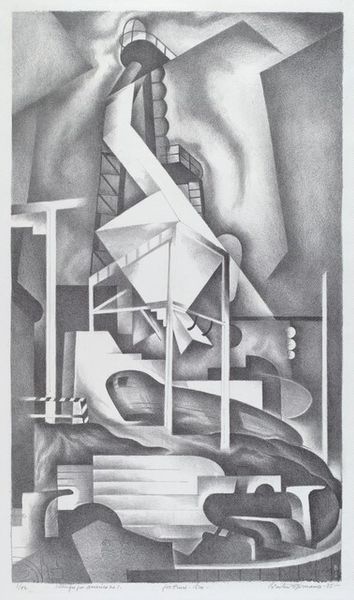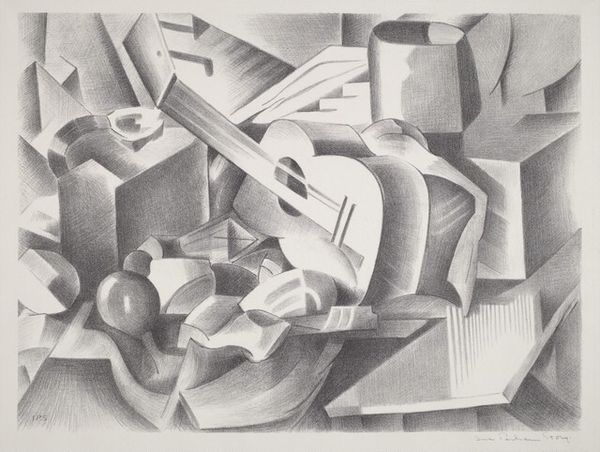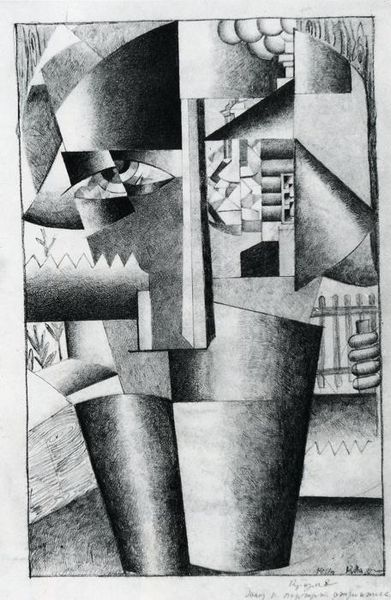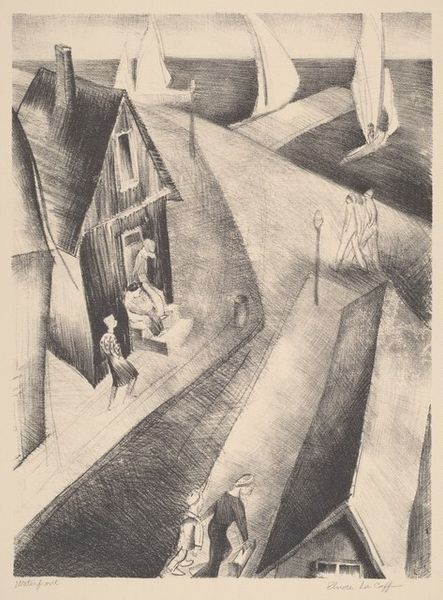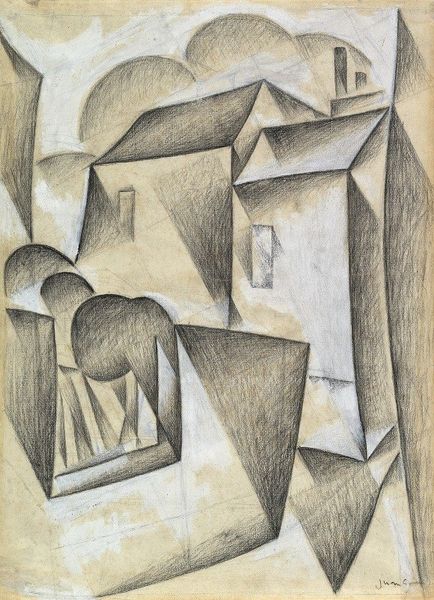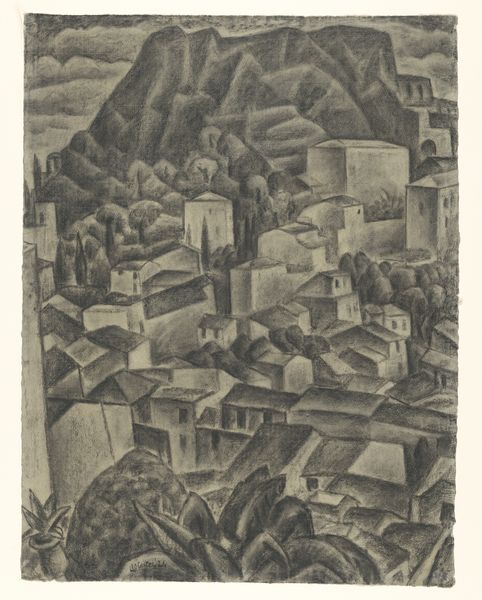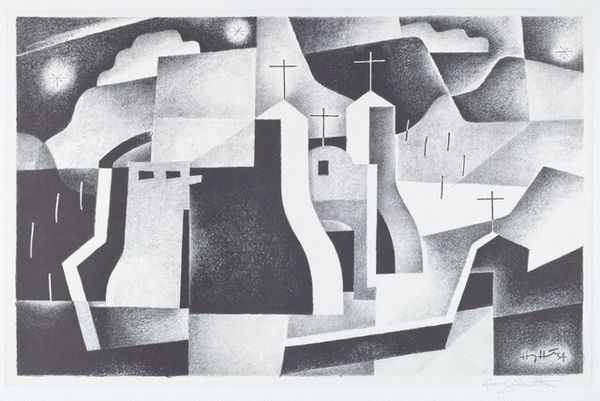
drawing, print, pencil
#
pencil drawn
#
drawing
# print
#
pencil sketch
#
landscape
#
pencil drawing
#
geometric
#
pencil
#
geometric-abstraction
#
cityscape
#
modernism
Dimensions: Image: 235 x 340 mm Sheet: 348 x 456 mm
Copyright: National Gallery of Art: CC0 1.0
Curator: This is Minnie Lois Murphy's "Untitled (In the High Hills)," dating circa 1930. It’s a pencil drawing, a print of an original work, demonstrating Murphy’s foray into modernism. Editor: My initial feeling? It’s all angles, as if reality's been shattered and reassembled. The geometric shapes almost vibrate on the paper; the artist is trying to give dynamism through line and material economy. Curator: It reflects a moment where artists were grappling with industrialization and urbanization. The angular shapes and the depiction of buildings evoke a city rendered through a modernist lens, far removed from romantic landscapes. It is clearly responding to those socio-political changes, wouldn't you agree? Editor: Undeniably. Looking closely, the gradations of gray achieved with the pencil indicate a skilled manipulation of the medium. Each stroke builds up layers, defining planes and forms through careful, repetitive labour. You can almost feel her hand moving across the paper, adding and subtracting density, revealing the materiality of the pencil. Curator: These abstracted shapes serve not just to represent buildings but to suggest the new rhythms of the Machine Age. Look at how the forms create a visual vocabulary linked to broader themes present during the time like the loss of older cultural forms and more focus on modern life and mechanization. Editor: Yes, it reminds one that even humble materials like pencils have a place in representing the monumental changes of this period, but this representation does have a downside too. Pencil as medium inherently evokes the everyday and even impermanence - it isn't marble or bronze; it has associations to work or study and notes; it is the stuff of rapid production, of constant revisions. Curator: I concur that this choice adds another layer of interpretation. Murphy utilizes it perhaps to emphasize both accessibility and ubiquity in our approach toward interpreting the cultural environment of the time. The social landscape influenced her technique, choice of material and theme. Editor: It's this dialectic between material, process, and context that gives this artwork its lasting strength. Thank you, Curator! Curator: An insightful discussion as always.
Comments
No comments
Be the first to comment and join the conversation on the ultimate creative platform.

